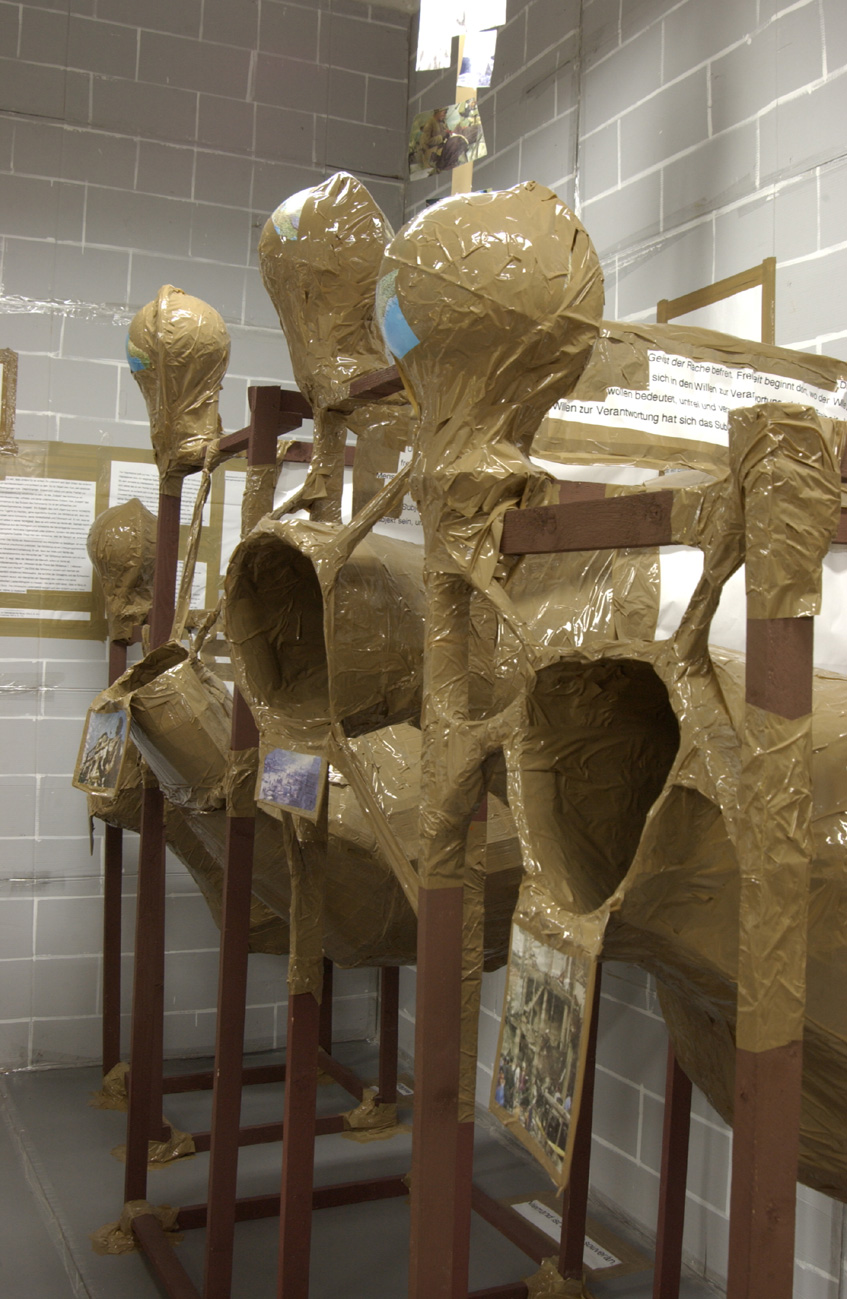 |
|
|
 |
|
6. Conservation issues (April 2007)
creator(s) Maike Grün (conservator)
contributor(s) Martina Pfenninger (conservator)
Familiar everyday materials were used in the construction of Thomas Hirschhorn’s ‘Doppelgarage’ – PVC sheeting, wall panels consisting of flattened-out removal boxes coated with everyday wall paint and decorated with stickers, texts and photographs cut out from glossy magazines. The dominant materials are opaque brown and colourless transparent adhesive tape. Hirschhorn used the tape for a number of purposes: as a structural aide to fix multi-outlet power strips on the wall; like putty or clay to model the rib-like lamellae of the giant mushrooms, or in closely laid strips to add colouristic effect to the surfaces of objects.
It is common knowledge that none of these everyday materials is very durable. Cut-out photographs fade, PVC flooring wears out and begins to look shabby, adhesive tape deteriorates and loses its adhesive properties. To the artist, the solution is simple: ‘The tape will have to be replaced’. For him, this is of course an understandable approach, but problematical to the conservator. The long-established principle that conservation should only be carried out on a minimally invasive basis requires the conservator to consider the issues on a case-by-case basis – in each individual case, what are the implications of change in materials? And what approach should the conservator take?
Resolution of this conflict of interest can only await the first clear need for intervention. When that need arises, the inventory, the photo documentation and the interviews with the artist will provide a sound basis for future conservational discussions.
Click download for scientific analysis of brown adhesive tape and paint (PDF).
PHOTO: objects largely made of brown adhesive tape (Haydar Koyupinar, Bayerische Staatsgemäldesammlungen © VG Bild-Kunst Bonn, 2007)
 Copyright Protected Copyright Protected
|